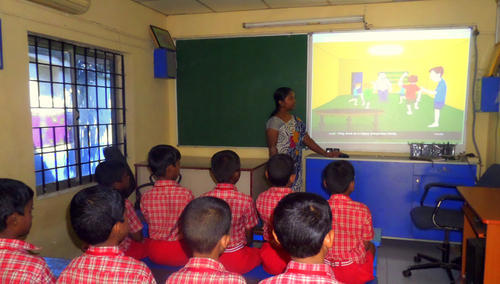E-Learning in Schools: Five Reasons Why It Will Work

Brief Summary: This article explains why e-learning can be the best available solution for Indian schools. It details five reasons to this effect, and discusses each reason.
Introduction
Educational institutions in India are not strangers to technology. Especially the schools and colleges in urban areas are equipped to integrate digital education with their curriculum. They have computer laboratories and digital classrooms which are suitable for this purpose.
As technology is evolving at a rapid pace, there are numerous tech-based solutions which facilitates contact-less teaching. In effect, the classroom has expanded beyond its existing boundaries.
End to End Solutions
New age e-learning programs offer end-to-end solutions which can enable real-time digital education. This process can be simple, and withing the grasp of most teachers and students. If these e-learning programs are used effectively, digital education can be integrated seamlessly into the present teaching system.
The existing teachers can be trained to offer online teaching as well as traditional classroom teaching. There may not be the need to recruit fresh teachers who are more fluent with digital education.
Already most teachers and students have become adept at digital education, due to the lockdown period caused by Covid-19. As schools and colleges were shut down, education had shifted online. Methods like video calling, e-mails, management systems like ERP and social media were used to impart education.
These solutions are temporary and might have worked for a few months. But for a well-structured digital education system, dedicated e-learning programs are necessary. These provide end-to-end solutions and ensure sound education.
If schools can leverage e-learning tools, they will truly take a step towards the future. Once blended learning (classroom and digital education) is implemented, the country can boast of a more holistic and wholesome education system.
Let us look at the five reasons why e-learning is the way forward for the Indian education system.
- Blended Learning
E-learning is an effective and complementary tool to further enhance the physical classroom program. The biggest advantage of e-learning is that it is not bound by the constraints of time and space. It can be enabled from any place, at any time.
Blended learning also makes the process of learning more engaging. Learning does not have to mean staring at a blackboard or listening to long lectures and taking down copious notes. These are bound to make the students’ mind wander. Blended learning will keep their interest piqued.
- learning can be done in two ways, for maximum effectiveness. At real-time, with a teacher present. Or self-paced, where the student chooses when and how much to learn.
- Teacher Productivity
Digital learning tools can increase teacher productivity. These tools allow teachers to focus more on students and teaching results. Online education programs provide schools and colleges the futuristic advantage of automated assessment and detailed performance analysis of students. This can be done on an individual basis, leading to overall effectiveness of education.
Students can be given problem-solving or scenario-based questions. They can answer with one click of the mouse. Assessment can be as simple as this.
Online education also provides detailed information on a particular teaching program. This includes progress of the course, assessment scores and student involvement rates. This information enables teachers to respond promptly and suitably, according to individual students’ needs.
- Positive Impact
Online learning organizes the complex process of imparting education. It also makes significant improvements on the time tested methods of teaching. Rote learning is not the be-all and end-all of the educational process, and online education helps achieve that end.
- learning programs have a vast digital scope. Teachers and students can get access to outside curriculum and interactive sessions. This promotes ease of learning. Teachers or students need not be all gathered in one place and at one time for the process of education. This flexibility leads to a happier and healthier education ecosystem.
- Interactive Content
Textbook learning can be boring if that is the sole basis of education. It is especially true for young learners. This is where online education can be a game changer.
E-learning programs have e-books, animated content and videos. These make the process of education more interactive and engaging.
Online teaching programs can measure individual level of understanding through online assessments and quizzes. These are far more interesting to students than traditional examinations.
Digital education curriculum can be broken into course modules. These modules can be personalized on the basis of student performance. This helps students get better education.
- Virtual Proctoring
Proctoring is a big advantage of online learning. When virtual proctoring is added to an online education program, teachers and students can sit for examinations at a time and place convenient for them, without compromising the integrity of the process. This makes the examination and assessment process easier.
Conclusion
Digital education is set to transform the landscape of the education system in India. It is the ideal complement to traditional modes of learning. Integrated with traditional learning, online education can enrich the entire process.









